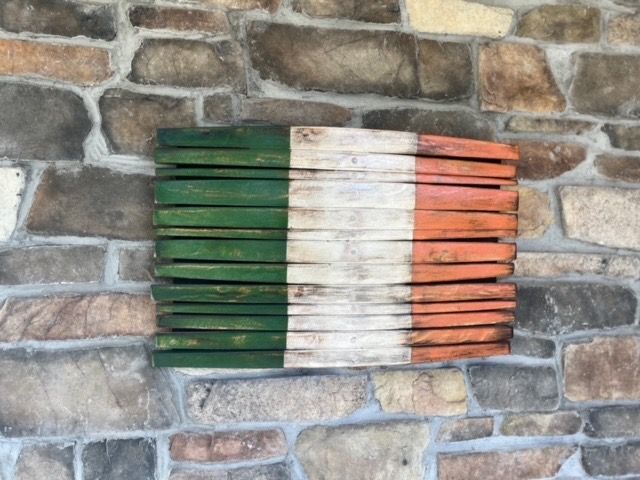5/4/2015. Easter Rising Commemorations
President Michael D. Higgins inspecting an Irish army guard of honor during last month’s Easter 1916 commemorations in Dublin. Photocall
By Ray O’Hanlon
rohanlon@irishecho.com
Gallipoli is long associated with the horrific losses suffered by the ANZACS, soldiers from Australia and New Zealand.
But more than 3,000 Irish soldiers were lost in what was one of the bloodiest campaigns of World War I.
And the sacrifice of those Irishmen, who came from every corner of a pre-partition Ireland, will be remembered this weekend when President Michael D. Higgins and Ireland’s Foreign Minister, Charlie Flanagan, travel to Turkey for the opening of centenary commemorations marking the start of what was, in broader terms, known as the Dardanelles campaign.
The campaign against the Ottoman Turks - who were allied with Germany and Austria Hungary - opened on April 25, 1915 and was centered in the Gallipoli peninsula, part of modern day Turkey.
It lasted until January, 1916 when allied forces that included British, French, Australian, and New Zealand troops were withdrawn to Egypt.
The Irish soldiers were attached to Irish regiments in the British army and they played a significant role in the fighting – with casualties to match.
Most of the Irish were killed in the bitter battles that took place in August and September 1915.
But their deaths were virtually scrubbed from the Irish historical record in the years after the 1916 Rising and the War of Independence.
In recent years, their role in what was a disastrous campaign from the allied perspective has been highlighted in a number of ways, not least by a critically acclaimed book, “Field of Bones,” by Irish author Phillip Orr.
Prior to President Higgins and Minister Flanagan traveling to Turkey, a ceremony was held earlier this week at the War Memorial Gardens in Islandbridge, Dublin.
The event, according to an Irish Times report, was to mark the completion of the conservation work on memorial books listing the World War I Irish war dead.
Minister of State Simon Harris represented the Irish government at the ceremony.
In honor of the minister, said the Times report, pages containing the names of young men called Harris who died in the war were left open for him to read. Three Irish soldiers named Harris perished in the Gallipoli campaign and in fighting that continued afterwards in the Balkans.
Private John Harris of the Royal Dublin Fusiliers was listed as killed in action in the Balkans on September 23rd, 1916. Another private John Harris of the Royal Munster Fusiliers was killed in action in Greek Macedonia on October 3rd, 1916, while Norman Harris, corporal with the Australian Imperial Fusiliers, was killed in action in the Dardanelles.
Sean Connolly of the Royal Dublin Fusiliers Association stated that 3,400 Irish men died in the campaign, which cost the lives of 7,000 Australians and 2,000 New Zealanders.
Historians point to the ANZAC losses as the cause of an awakening, in the years after the war, of a new national consciousness in both Australia (where roughly a third of the population has Irish ancestral links) and New Zealand.
Connolly said an aspect of the campaign that was overlooked was that after their evacuation from Gallipoli, the soldiers of the 10th Irish Division were involved in fighting with the Serbs against the Bulgarians, and also in Salonika (now northern Greece).
A memorial cross in honor of the division today stands at Rabrovo, in what is now the independent country of Macedonia.
Minister Harris said that for too long the Irishmen who died in the First World War had not been properly remembered, or their sacrifice understood, but this had, thankfully, started to change in recent years.










